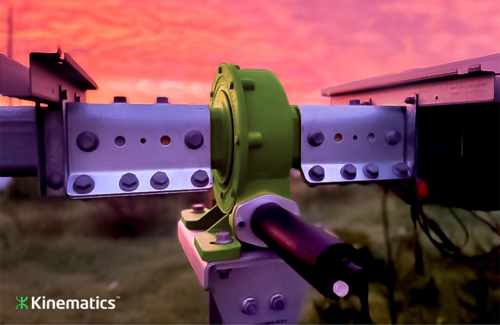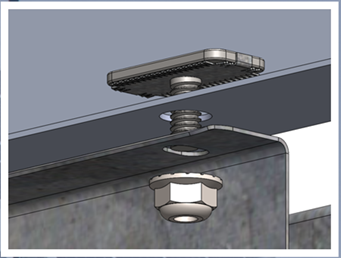
公用事业太阳能行业有一个不为人知的秘密,至少是一个阴暗的秘密,但有消息认为:很大一部分太阳能发电厂表现不佳。最近发布的“2021 年太阳能发电报告(“Solar Generation Report 2021)”揭示了以下内容:通过千瓦时分析(根据资产所有者数据进行的业内最全面的能源验证研究之一),“美国超过 30% 的非住宅系统将实际生产与融资进行了比较。 P50 估计(目标产量)从 2011 年到 2020 年,发现系统在任何给定年份的平均表现也低于 5-13%,即使在调整天气后也是如此。”

在大型太阳能资产的整个生命周期中,地形阴影损失会导致生产损失和数百万美元的收入损失。
尽管这些统计数据令人不安,但它们并不一定意味着太阳能发电厂不工作,而是预期性能与实测性能之间的差距已经扩大。问题与如何确定这些 P50 估计值有关。这些模型并不像应有的那样准确,从而使资产所有者对实际工厂性能的预期不切实际。值得庆幸的是,有一些方法可以缩小“预期与测量”的差距,并减轻一些导致业绩不佳的根本原因。
更好地使建模预期与实际现场性能保持一致的一种途径是解决地形阴影损失问题。公用事业太阳能阴影损失的根本原因可以分为几个方面:
• 起伏的地形
• 施工容差导致行间跟踪器基础高度非平面
• 靠近树木、附近山脉和场地边界的其他特征的阴影
就像任何令人不安的事实一样,人们必须首先承认存在问题。公用事业太阳能发电厂是否会出现阴影,它是否会影响发电量?是的,几乎所有的太阳能发电厂都有阴影损失。这些阴影问题最终可能导致全年发电量损失几个百分点——并显著削弱电站资产的预期财务业绩。

地势起伏、施工容差问题或两者的结合都可能导致阴影功率损失。
标准建模工具传统上并没有在产量估计中很好地量化这些阴影问题(如果有的话)。阴影损失经常被忽略或断然降级,对可能具有各种局部坡度的所谓“平坦场地”存在一种误导的看法,并且通常的建模方法很乏味,并且在正确模拟地形阴影损失方面还有很长的路要走.
好消息是,使用最新的行业可访问工具可以实现更好的阴影建模,并且可以缩小建模与测量的差距。通过准确了解阴影损失和“真实”基线,可以对阴影缓解技术做出明智的决定。
Nextracker 一直在与我们的客户和合作伙伴密切合作,解决地形损失的“房间里的大象”,通过拨入真实的可融资模型,然后微调模型以考虑我们 TrueCapture™ 能量产量增强和控制软件的有效性平台。
我们推荐的阴影建模做法是将 AutoCAD 和 PVsyst 结合起来——现在支持从基于 CAD 的工具导出的文件格式,以模拟地形对单轴跟踪器的性能影响——然后提供更准确和详细的阴影损失图片. 在 Nextracker 的公用事业规模现场测试中,这种建模实践接近于实际的生产损失数字。
Nextracker 正在与业主、开发商和独立工程公司合作,以标准化地形阴影建模过程,以创建准确且可靠的生产预期。使用 PVsyst 中的场地地形信息在施工前估算阴影损失应该是从一开始就准确设定工厂性能预期的关键步骤。

Nextracker 推荐的阴影建模实践结合了 AutoCAD 和 PVsyst,可提供更准确和详细的阴影损失图。
虽然阴影(损失)发生在采用了传统跟踪的电站上,但能源产量增强和控制软件平台(如 TrueCapture)与独立单行跟踪器架构配对可以减轻这些损失。借助 TrueCapture 增强型系统,可利用我们专有的部署方法准确确定每行的竣工高度,从而将施工公差考虑在内。然后将这些竣工高度用作部署 TrueCapture 行对行算法的主要输入,以确定最佳跟踪角度。从建模的角度来看,我们可以根据竣工高度创建轮廓层,为 PVsyst 创建阴影场景。
在这份关于电站表现不佳和地形阴影损失的简要概述中,人们吸收了越来越多的知识。通过利用这些资源,可以获得更深入的理解。
查看已共享和讨论的内容,例如我们在最近一次 PV Tech 网络研讨会中的发现和贡献的文章,以及回答网络研讨会期间提出的许多问题的后续博客文章。其他解决电厂性能不佳问题的资源,特别是跟踪器地形挑战,包括今年早些时候 Black & Veatch 发表的一篇 Solar Builder 文章、DNV 用于模拟复杂地形的 SolarFarmer 光伏电厂设计软件(将地形建模视为标准最佳实践)、kWh Analytics ‘ 上述研究,以及我们自己的 Defne Gun 在 TrueCapture 上的 Split Boost 模式上发表的博客文章,该模式可优化拆分电池、大尺寸 PV 模块的能源生产。DNV 还在 2020 年和 2021 年发表了两篇关于跟踪器地形损失的 IEEE PVSC 论文。
如果您想详细了解如何使用 TrueCapture 减轻跟踪器地形阴影损失并优化公用事业太阳能发电厂的性能,请联系 insidesales@nextracker.com。
原文:
Closing the Reality Gap: Optimizing Solar Plant Performance with Shade Loss Mitigation

The utility solar industry has a dark secret, well at least a shady one, but the word is getting out: A significant portion of solar power plants are underperforming. The recently issued “Solar Generation Report 2021” from kWh Analytics (one of the industry’s most comprehensive energy validation studies taken from asset owner data) revealed the following: “More than 30% of non-residential systems in the U.S. compared actual production against financed P50 estimates (target production) from 2011–2020 and found that systems on average underperformed by 5-13% in any given year, even after adjusting for weather.”

Terrain shade loss can lead to nagging production losses and millions of dollars in lost revenue over the lifetime of a large-scale solar asset.
Although these statistics are troubling, they don’t necessarily mean that solar power plants aren’t working, but that the gap between expected and measured performance has widened. The problem is related to how those P50 estimates are determined. The models are not as accurate as they should be, thus giving asset owners a less-than-realistic expectation of what the actual plant performance should be. Thankfully, there are ways to close the “expected versus measured” gap—and to mitigate some of the underlying reasons for the underperformance.
One pathway to better align modeled expectations to real in-field performance is to address the issue of terrain shade losses. The root causes of utility-solar shade loss can be divided into several buckets:
• Undulating terrain
• Construction tolerances resulting in nonplanar tracker pier heights among rows
• Near shading from trees, nearby mountains, and other features at the site boundary
Like any uncomfortable truth, one must first admit there is a problem. Do utility solar plants experience shading, and does it impact energy yields? Yes, nearly all solar plants have shade losses. These shade issues can end up resulting in several percentage points of annual energy yield loss—and significantly undercut the expected financial performance of the asset.

Shade power losses can result from undulating terrain, construction tolerance issues, or a combination of the two.
Standard modeling tools have not traditionally quantified these shade issues well (if at all) in yield estimations. Shade loss is often ignored or categorically derated, there’s a misguided perception of so-called “flat sites” that may have a variety of localized slopes, and the usual modeling methods are tedious and have a long way to go to properly model terrain shade loss.
The good news is, better shade modeling is possible with the latest industry-accessible tools, and the modeled versus measured gap can be narrowed. It’s possible to make informed decisions on shade mitigation technologies by having an accurate understanding of the shade loss and the “real” baseline.
Nextracker has been working closely with our customers and partners on the “elephant in the room” of terrain loss, by dialing in realistic bankable models and then fine-tuning the model to account for the effectiveness of our TrueCapture™ energy yield enhancement and control software platform.
Our recommended practice for shade modeling is to combine AutoCAD and PVsyst—which now supports file formats exported from CAD-based tools to model performance impacts of the terrain for single-axis trackers—which then provides a more accurate and detailed picture of the shade loss. In Nextracker’s utility-scale field testing, this modeling practice is tracking close to the actual production loss numbers.
Nextracker is working with owners, developers, and independent engineering firms to standardize the terrain shade modeling process to create accurate and bankable production expectations. Using site topographic information in PVsyst for the purpose of estimating shade losses before construction should be a key step in accurately setting performance expectations for a plant from the very beginning.

Nextracker’s recommended practice for shade modeling combines AutoCAD and PVsyst, which provides a more accurate and detailed picture of the shade loss.
While shade (loss) happens on sites with traditional backtracking, energy yield enhancement and control software platforms like TrueCapture paired with an independent-row tracker architecture can mitigate those losses. With a TrueCapture–enhanced system, construction tolerances are taken into account by utilizing our proprietary deployment methods that accurately determine the as-built height of each row. These as-built heights are then used as the primary input for deploying the TrueCapture row-to-row algorithm that determines optimal tracking angles. From a modeling standpoint, we can create contour layers based on the as-built heights to create shade scenes for PVsyst.
There is a growing body of knowledge that’s been drawn on in this brief overview of plant underperformance and terrain shade loss. A deeper understanding can be attained by taking advantage of these resources.
Take a look at what has been shared and discussed, such as our findings during a recent PV Tech webinar and contributed article, plus a follow-up blog post answering many of the questions posed during the webinar. Other resources addressing the topic of plant underperformance and specifically tracker terrain challenges include a Solar Builder article from Black & Veatch published earlier this year, DNV’s SolarFarmer PV plant design software for modeling complex terrain (which considers terrain modeling a standard best practice), kWh Analytics’ above-mentioned study, and our own Defne Gun’s blog post on our Split Boost mode on TrueCapture that optimizes split-cell, large-format PV module energy production. DNV also came out with two IEEE PVSC papers in 2020 and 2021 on tracker terrain loss.
If you want to learn more about how to mitigate tracker terrain shade loss and optimize the performance of your utility solar plant using TrueCapture, contact insidesales@nextracker.com.












